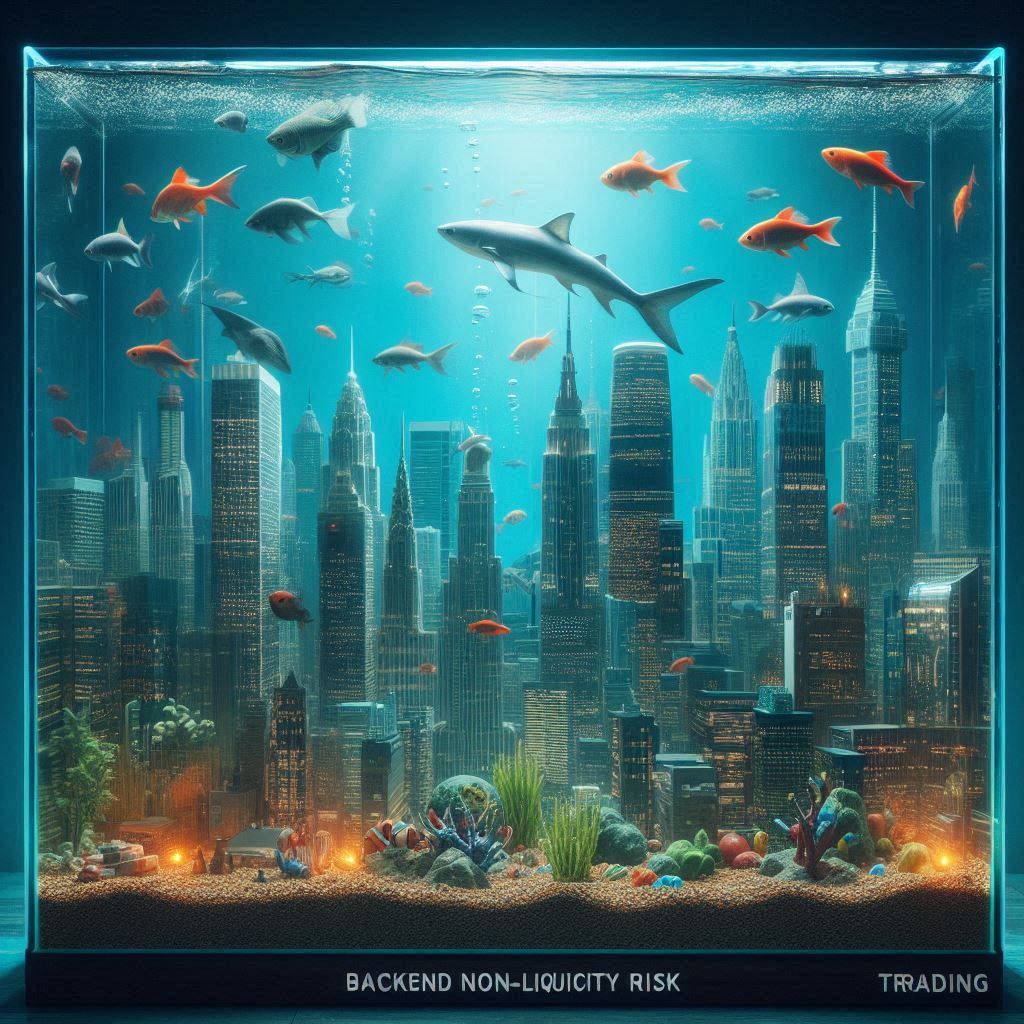Imagine being a deep-sea diver, gearing up with oxygen tanks, sonar systems, and flippers to explore the vast, wild ocean. But the moment you leap in—you realize you’re not in the sea. You’re inside a giant glass aquarium, with artificial waves, plastic coral, and no danger of sharks or storms.

This is what many traders experience in prop firms running synthetic or simulated models. Their trades move, charts fluctuate, profits rise and fall—but in truth, no real market is touched. There is no real liquidity, no counterparties, no execution risk.
This is the essence of Backend Non-Liquidity Risk.
A Risk That Doesn’t Exist—For the Firm
In traditional trading environments, liquidity is king. Institutions face massive risks if markets are thin or volatile. When you place a large trade in a live market, the firm executing it must manage slippage, execution timing, and spread. Real trades carry real consequences.
But in the backend of many prop firms, the “funded” trades never reach a real market. They stay within a virtual loop—an environment where risk is coded, not experienced. This means:
- The firm faces zero liquidity pressure
- There are no market counterparties
- Execution is artificial and controlled
For the firm, this is like playing poker with marked cards in a private room—no danger of losing money, only the cost of software and server maintenance.

The Labyrinth of False Risk
Let’s invoke Theseus in the Labyrinth—the Greek hero who wandered a maze full of traps, believing his life was in danger. Now imagine that maze was a theme park—the danger was fake, and Theseus was simply being watched behind glass. That’s the trader in a non-liquid backend: performing, competing, sweating—but never truly at risk of market forces, and neither is the firm.
What looks like risk is often just a well-designed stage performance, complete with blinking dashboards and ticking spreads.
Illusion of Skill, Erosion of Trust
The problem is not just ethical—it’s structural. If a trader thinks they are operating in a real, liquid environment, they develop skills suited to that condition. But when the environment is simulated:
- Slippage may be idealized
- Order execution is instant
- Market impact is nonexistent
Thus, a trader who “succeeds” in this fake liquidity pool may fail in live markets. Their confidence is built on false feedback, like a pilot learning to fly in a simulator with gravity turned off.
Worse, when they question a rejected payout or glitch in trade execution, they often discover the truth: there was no real market involved to begin with.
Q&A: Understanding Backend Non-Liquidity Risk
Q: What does “non-liquidity” actually mean in this context?
A: It means that the trades a trader executes aren’t interacting with real financial markets. The backend system simulates a market, so there is no real buyer or seller, just code mimicking them.
Q: Why is this a problem?
A: It allows firms to operate without taking financial risk. This opens the door for manipulation, denial of payouts, or changing conditions mid-challenge without consequences to the firm.
Q: Is it dishonest?
A: Not always explicitly. Some firms disclose that traders are in simulated environments. The issue arises when firms market themselves as offering real capital or live execution, misleading users into believing their trades have real market impact.
Q: Can this affect a trader’s development?
A: Absolutely. Traders may develop habits that succeed in synthetic conditions but fail in live markets. They are training in a mirror world, not the battlefield.
Q: Are there any firms that use real liquidity?
A: Yes, a few prop firms route trades to real liquidity providers or use hybrid models where top-performing traders eventually transition to live accounts. Transparency is key.
Trading in a Painted Aquarium
Backend non-liquidity risk is not just a technical nuance—it is a philosophical deception. It’s the difference between flying a plane in a simulator versus flying through a thunderstorm. One feels real until it isn’t.
Prop firms that avoid liquidity are, in effect, swimming in aquariums while selling the dream of oceans. Traders deserve to know whether they’re navigating real currents—or just plastic waves under LED lights.
And until full transparency becomes standard, every trader must ask before diving in:
“Am I swimming in the sea—or behind glass?”


